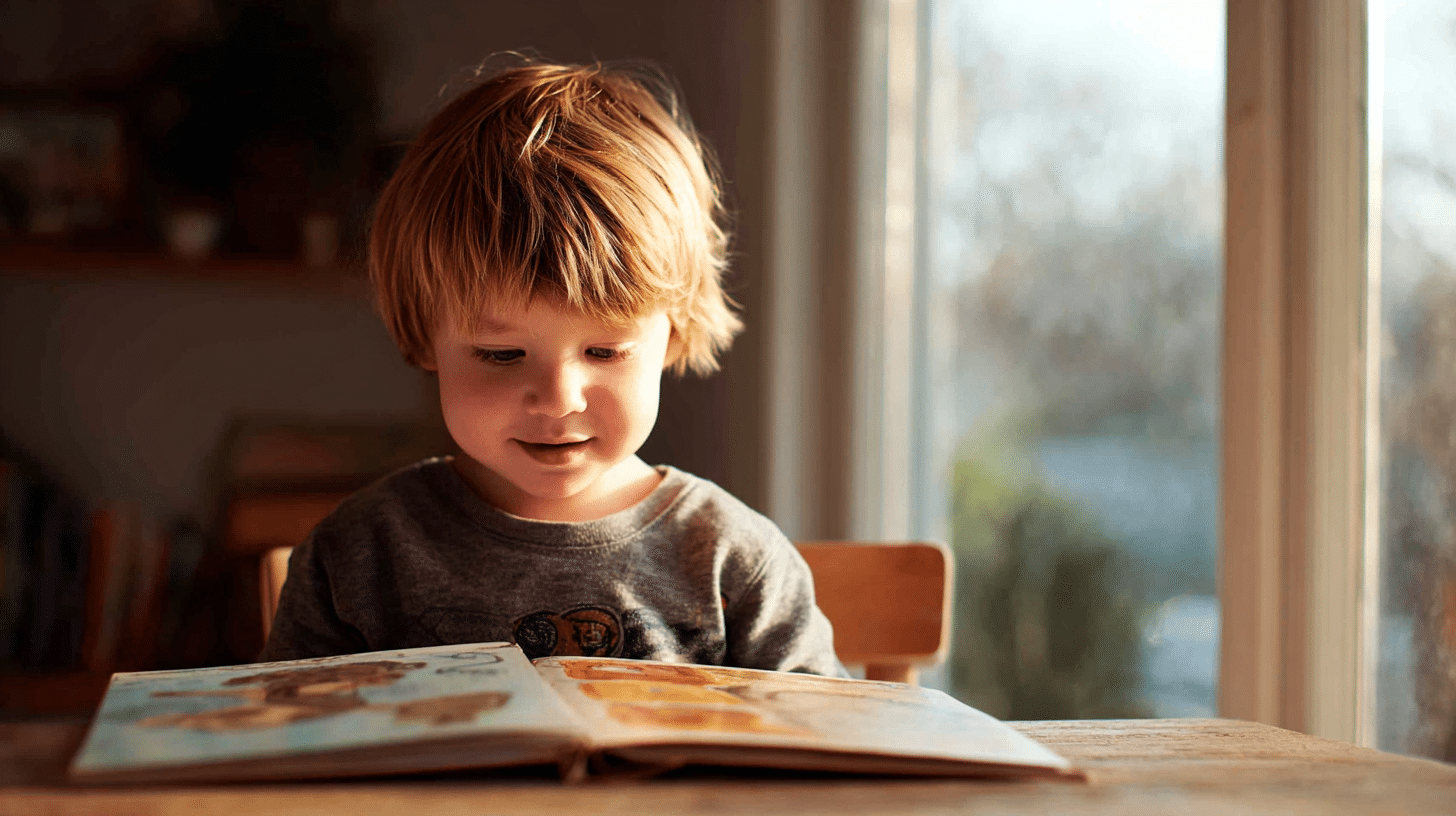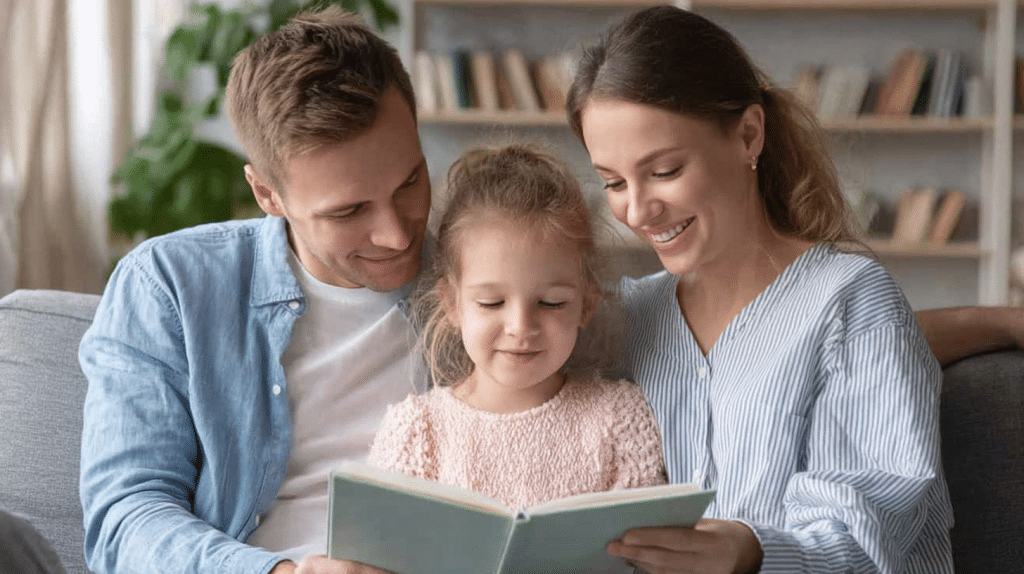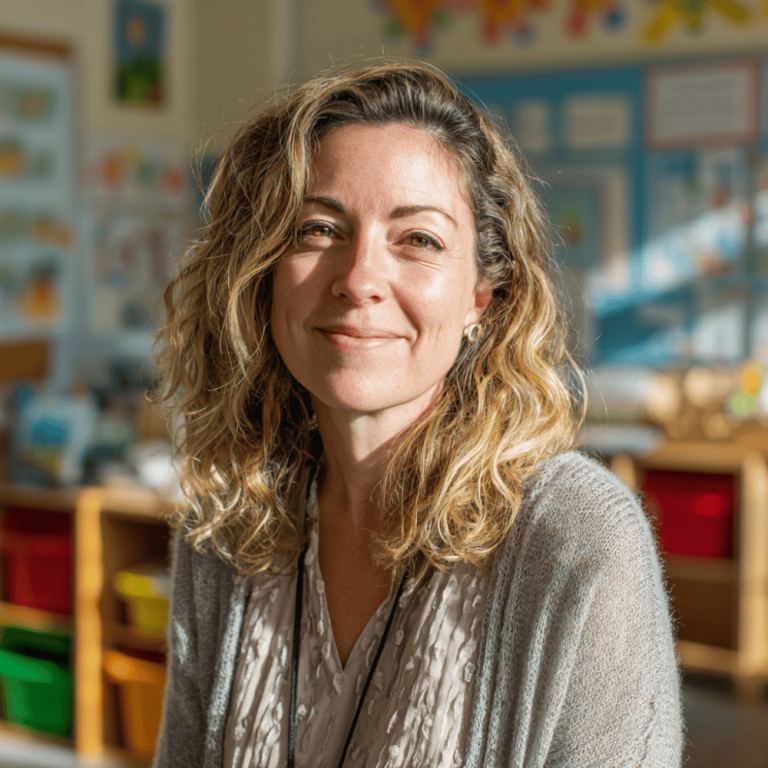I’ve always believed that learning to read is one of the most exciting milestones in childhood.
When I watch kids begin to recognize letters, connect sounds, and finally read their first book on their own, it reminds me why this journey matters so much.
Reading doesn’t happen all at once – it happens in stages, and each step builds confidence and opens new doors.
In this post, I’ll walk you through the stages of learning to read, share the signs that show a child is ready, and offer tips that parents and teachers can use at home or in the classroom.
I’ll also talk about how play and support make the process easier, so reading feels joyful, not stressful.
The Stages of Learning to Read

The stages of learning to read happen step by step, and each stage builds on the one before it.
Stage 1 – Birth to Preschool: Children build early literacy by listening to stories, songs, and conversations. They begin to enjoy language and understand that books tell stories.
Stage 2 – Kindergarten: Kids start recognizing letters, connecting them with sounds, and reading simple sight words. They may also try writing their name or single letters.
Stage 3 – First Grade: Reading grows quickly with phonics and sounding out words. Many children begin reading short books on their own and gain confidence as readers.
Stage 4 – Second to Third Grade: Children develop fluency and better comprehension. Reading shifts from learning the skill itself to using reading as a tool to understand and learn new ideas.
Signs Your Child is Ready to Read
When do kids learn to read? One of the best ways to know is by watching for signs of readiness.
- Showsinterest in books and stories, asking you to read often.
- Flips through pages and enjoys looking at pictures.
- Points out letters on signs, packaging, or around the house.
- Connects sounds with letters or words they see.
- Pretends to read by making up stories while holding a book.
- Attempts to write letters or their name, even if imperfect.
- Asks questions about words or shows curiosity about how reading works.
Typical Ages vs. Early/Late Readers
Most kids learn to read between the ages of four and seven. This is the normal range, and being on either end of it is perfectly fine.
| Category | Age Range | Key Points |
|---|---|---|
| Normal Range | 4–7 years | Most children begin reading during this stage. |
| Early Readers | 3–4 years | – May seem advanced, but not always gifted – Risk of pressure if pushed early |
| Late Bloomers | 7+ years | – Often need more time and practice – Usually catch up by 2nd or 3rd grade |
Some children may start reading at three or four, while others may not feel ready until first or even second grade. Early readers are often seen as gifted, but that is not always the case.
Sometimes, they simply had more exposure at home. Late bloomers are also common, and with patience and support, they usually catch up quickly. The key is to avoid pressure and focus on building confidence.
Supporting Reading at Home
Supporting reading at home does not have to be complicated. Start by reading aloud to your child every day, even if it is just for a few minutes. Some recommendations are below:
- Brown Bear, Brown Bear, What Do You See?by Bill Martin Jr. & Eric Carl: Repetitive, rhythmic text makes it easy for young children to follow along.
- Chicka Chicka Boom Boomby Bill Martin Jr. & John Archambault: A fun way to introduce the alphabet with rhyme and rhythm.
- The Very Hungry Caterpillarby Eric Carle. Engaging pictures and simple words are perfect for preschoolers.
- Hop on Popby Dr. Seuss. Great for learning phonics and simple word families.
- Elephant & Piggie seriesby Mo Willems. Simple text, expressive illustrations, and humor that kids love.
- If You Give a Mouse a Cookieby Laura Numeroff is a circular story that helps with comprehension
Choose books they enjoy and make it a fun time together. Play simple phonics and word games, like matching sounds or finding rhyming words, to make learning playful.
When to Seek Extra Help
Most children learn to read at their own pace, but sometimes they need extra support. One red flag is when a child still struggles to recognize letters, connect sounds, or read simple words by age seven or eight.
You might also notice they have trouble remembering sight words, avoid reading, or feel frustrated when asked to read. These could be signs of a challenge like dyslexia.
If you see these patterns, talk with your child’s teacher. Teachers can check progress, give assessments, and suggest helpful strategies for both school and home. Sometimes, they may recommend further evaluations with specialists.
Early intervention is important because the sooner a child gets help, the easier it is for them to catch up. Extra support may include small group lessons, reading programs, or speech and language help.
Remember, asking for help does not mean your child is failing – it means you are giving them tools to succeed.
How Play Supports Reading Readiness
Play is one of the easiest and most natural ways to prepare children for reading. When kids engage in pretend play, they practice storytelling, build vocabulary, and learn how conversations flow.
Singing songs and nursery rhymes introduces rhythm, patterns, and rhyming words, which are all key skills for early literacy. Even simple games like clapping out syllables or matching beginning sounds make learning fun.
Parents can try easy activities at home, such as:
- Playing “I Spy” with letters and sounds.
- Singing rhyming songs together during playtime.
- Acting out favorite storybook characters.
- Using magnetic letters on the fridge to build silly words.
These playful moments help children connect language to real life and give them confidence when it is time to start reading
Different Paths to Learning to Read
Children around the world learn to read in different ways, and both culture and education play a big role.
In some places, like Finland, formal reading lessons start at age seven with a focus on play and language skills first. In other countries, reading begins earlier, often in kindergarten, with structured phonics lessons.
Both approaches work, showing there is no single “right” age for reading. What matters most is keeping reading enjoyable and supporting each child’s confidence.
Comparing kids to their peers can add pressure and take away the joy of learning. Instead, parents and teachers can celebrate small steps, create positive reading moments, and remind children that progress looks different for everyone.
With patience and encouragement, children build not only reading skills but also a lifelong love of books.
Conclusion
Learning to read is a journey that unfolds differently for every child, and what matters most is supporting them with patience and encouragement.
Instead of focusing on timelines, think about how you can create meaningful reading moments each day – whether it’s sharing a bedtime story, going to the library together, or letting your child choose their own books.
These experiences shape not only their reading skills but also their curiosity and imagination.
If you want to make this process easier, take the next step with our practical tips, age-appropriate book lists, and trusted resources. Start building a reading routine today that will inspire your child for years to come.











